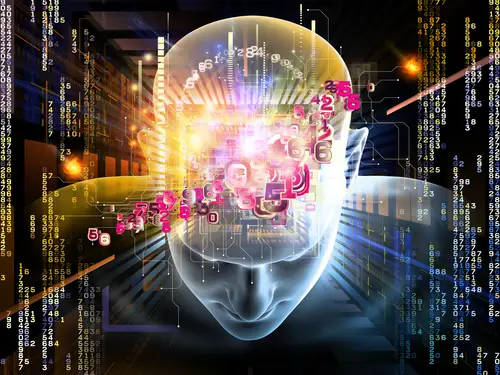Welcome to the fascinating world of Artificial Intelligence (AI), a technological revolution that’s reshaping our lives in incredible ways. This post, “Artificial Intelligence: Understanding AI and Its Applications,” aims to demystify this complex field and bring its intricacies into focus for you. Whether it’s Siri responding intelligently on your iPhone or Amazon’s Alexa playing your favorite song. AI is seamlessly integrated into various aspects of our daily routines without us even realizing it! However, many still feel daunted by what exactly AI is and how it functions. Fear not! We’re here to break down these barriers so you can fully understand the magic behind AI technology. Ranging from neural networks and machine learning algorithms right through to real-world applications that will leave you astonished at their sheer possibilities. Join us as we embark on an exploration journey through the captivating realm of artificial intelligence.
“The Evolution of Artificial Intelligence”
Artificial Intelligence (AI) has undergone a remarkable evolution since its inception. Initially rooted in logic and symbolic reasoning, AI has now advanced to encompass machine learning and deep learning algorithms. The field has seen significant progress in areas such as natural language processing, computer vision, and robotics. One of the key milestones in AI development was the creation of neural networks, which revolutionized how machines learn and process information. The integration of big data and cloud computing has further fueled the growth of AI applications across various industries. As research in AI continues to accelerate, the possibilities for innovation and automation are seemingly limitless.
“Key Components and Operations of AI”
Artificial Intelligence (AI) comprises various key components and operations that enable machines to mimic human intelligence. One essential component is machine learning, which allows AI systems to learn from data and improve their performance over time. Neural networks are another crucial element of AI. They are inspired by the human brain, and are used for tasks like image and speech recognition. Additionally, natural language processing (NLP) enables machines to understand and generate human language, facilitating communication between humans and AI systems. These components work in tandem with algorithms and data to power AI operations. For instance, decision-making, problem-solving, and pattern recognition, making AI a versatile and powerful tool in various applications.
“Major Types of Artificial Intelligence: Narrow vs General AI”
Artificial Intelligence can be broadly classified into two major types: Narrow AI and General AI. Narrow AI, or Weak AI, is designed to perform specific tasks and is limited to the narrow range of activities it is programmed for. This type of AI is prevalent in our daily lives, from virtual assistants like Siri and Cortana to recommendation systems on streaming platforms like Netflix.
Narrow AI excels at tasks like speech recognition, image recognition, and natural language processing. However, it cannot generalize beyond its specific domain. On the other hand, General AI, also known as Strong AI or Artificial General Intelligence (AGI), aims to mimic human cognitive abilities across a wide range of tasks.
General AI possesses cognitive abilities similar to human beings, such as reasoning, problem-solving, and self-awareness. Unlike Narrow AI, General AI has the potential to learn and adapt to new situations without explicit programming. While General AI remains a theoretical concept and is yet to be fully realized, researchers are actively working towards achieving this level of artificial intelligence.
In conclusion, the distinction between Narrow AI and General AI lies in their scope and capabilities. Narrow AI is specialized in performing specific tasks efficiently within a limited domain. Whilst General AI aims to replicate human-like cognitive abilities across a broad spectrum of activities. Both types of Artificial Intelligence play crucial roles in various applications. Moreover, the development of General AI holds the promise of groundbreaking advancements in technology and society.
“Applications and Use Cases for Artificial Intelligence in Various Sectors”
Artificial intelligence (AI) has revolutionized various sectors with its wide-ranging applications and use cases. In healthcare, AI is used for medical image analysis, personalized treatment plans, and predictive analytics to improve patient outcomes. The automotive industry utilizes AI for autonomous driving, predictive maintenance, and smart manufacturing. In finance, AI is employed for fraud detection, algorithmic trading, and customer service chatbots. Retailers leverage AI for inventory management, personalized marketing, and virtual shopping assistants. Additionally, AI powers advanced security systems in cybersecurity, monitors traffic patterns in smart cities, and enhances the efficiency of agriculture through precision farming techniques. These diverse applications demonstrate the transformative potential of AI across different sectors.
“Ethical Considerations and Future Prospects of AI”
As artificial intelligence continues to advance at a rapid pace, ethical considerations surrounding its development and implementation become increasingly crucial. One of the primary concerns is ensuring that AI systems are designed and used in a way that upholds values such as fairness, accountability, and transparency. This includes addressing issues of bias in AI algorithms, ensuring data privacy and security. It also establishes clear guidelines for the ethical use of AI in various applications.
Another key aspect of ethical considerations in AI is the potential impact on the workforce. As AI technology automates certain tasks and processes, there is a growing concern about the displacement of human workers and the need for re-skilling to adapt to the changing job market. It will be essential for policymakers and businesses to collaborate on strategies that promote a smooth transition to an AI-driven economy while ensuring that the benefits are shared equitably among all members of society. Looking ahead, the prospects of AI are both exciting and challenging.
On one hand, AI has the potential to revolutionize industries, improve efficiency, and enhance decision-making processes. However, there are also concerns about the potential risks associated with unchecked AI development. For instance, the loss of human control over autonomous systems and the potential for misuse of AI technology for malicious purposes. To navigate these challenges and fully realize the benefits of AI, it will be essential for stakeholders to work together to establish robust frameworks for ethical AI development and deployment.
By addressing these ethical considerations head-on and fostering collaboration among industry leaders, policymakers, and researchers, we can ensure that AI continues to drive innovation and improve our lives responsibly and sustainably.

 Exploring the Latest Social Media Trends and How to Use Them
Exploring the Latest Social Media Trends and How to Use Them 10 Hidden iPhone Features You Didn’t Know Existed
10 Hidden iPhone Features You Didn’t Know Existed